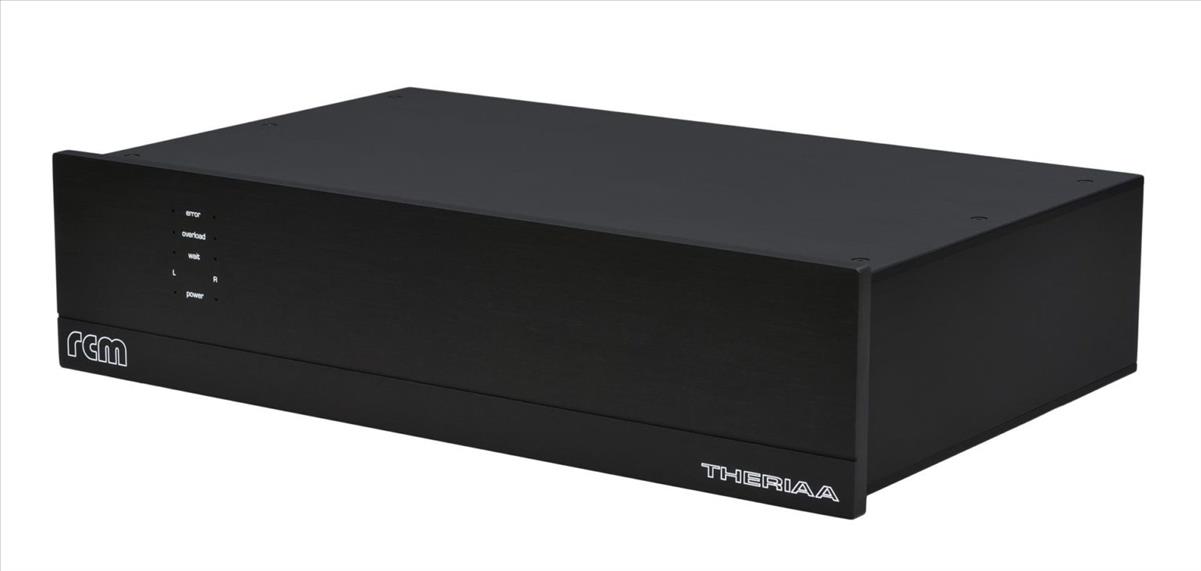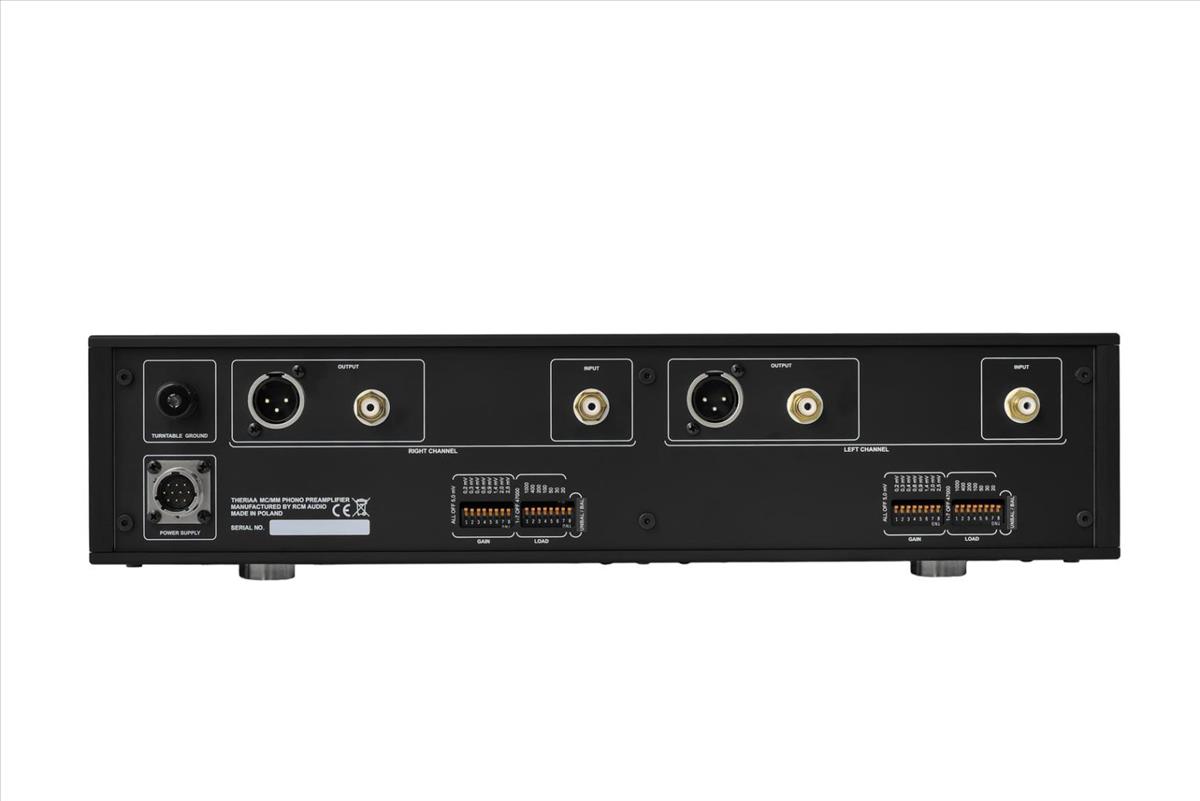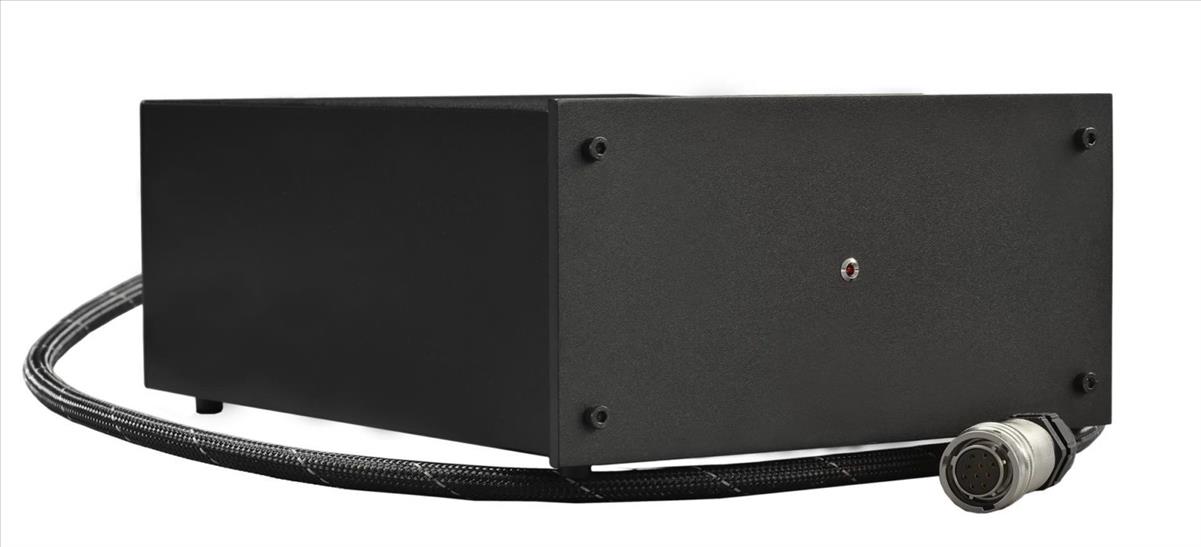Description
The Theriaa MkII phono preamplifier was created as a result of RCM’s research and experience in the field of sound reproduction, the source of which is an analogue turntable. It is a completely new project, which only in general terms refers to the SENSOR IC project.
For the construction of the entire system, RCM used components from the “top shelf” of renowned brands Elna, Sanyo, Nichicon, Wima, TDK Epcos, Vishay, Omron, Burr Brown, Analog Device and others. The use of such elements allowed for the maximum use of available technologies. The Theriaa MkII is a fully dual-mono design and is split into three main blocks. The first is the power supply. Located in a separate housing with a rectifier and a first stage of voltage stabilization. The second and third stage of filtration are located in the main casing of the preamplifier together with the circuits responsible for the riaa correction and amplification of the signal from the cartridge. To maintain optimal working conditions, the left and right channel plates are isolated from you with a 10mm screen and two 5mm screens in the power supply.
A characteristic feature of the preamplifier is the high level of the output signal. RCM say their experience shows that in order to obtain optimal sound, the signal level should not be lower than 1 volt, and preferably it should be at the level of 2 V. Such assemblies place very high demands on the entire system. Another characteristic feature of this device is the ability to change the input operating mode (balanced and unbalanced). The signal coming from the cartridge is a symmetrical one and with the appropriate input configuration we can increase the distance from noise and improve the dynamic range.
The matching of the input impedance and the gain level as well as the change of the input operating mode is controlled by high-quality Omron DIP switches located on the rear panel of the housing. Selected circuits deal with amplification of the signal. Equalization according to the RIAA standard is implemented as a passive system based on low noise resistors and polypropylene capacitors. To ensure accurate signal correction, all elements of the “filter” are measured and selected manually so that the deviation does not exceed 0.2dB in the band from 20Hz to 20kHz. The remaining elements are selected in a way that guarantees uniform operation of the preamplifier in both channels.
The key to a good phono preamplifier sound is the optimal frequency response and RIAA equalization, but without the proper power supply, all the effort is wasted, so the Theriaa MkII is equipped with a symmetrical power supply, the design of which is aimed at maximum noise reduction. It is also important to isolate the transformers from the sensitive equalization and amplification circuits.
Input sensitivity
0.2 – 5 mV (adjustable)
Sensitivity adjustment
0.2 – 0.3 – 0.4 – 0.6 – 0.9 – 1.4 – 2.0 – 2.5 – 5 mV
Gain
52 – 76 dB (2V rms output)
Input Impedance
20 ohms – 47,000 ohms
Impedance adjustment
20 – 30 – 50 – 100 – 200 – 400 – 1,000 – 47,000 ohms
Input capacity
100 pF
The input operation mode is symmetrical – unbalanced
RCA input
THD
0.01%
S / N
85dB
RIAA Linearity
+/- 0.1dB (20Hz-20kHz)
Output Impedance
70ohm
XLR, RCA output
Nominal Output Level
2V rms
Maximum output level
9V rms
Dimensions
440 x 265 x 120 mm – preamplifier
205 x 270 x 105 mm – power supply
Weight
9 kg. – preamplifier
4.5 kg. – charger
Consumption
max 17W

Back in Issue 102, I reviewed the RCM Audio theRIAA. It was a two-box, extraordinarily flexible MM/MC phono stage, that used ICs in place of discrete components in critical parts of the circuit. I liked it so much. I bought it. Ninety-one issues later, I’m faced with the same box, albeit this time with some very different innards. You see, where many companies might plump for the cosmetic upgrade every decade or so, RCM Audio has instead redesigned the circuit boards of the original theRIAA. An internal makeover means a more significant power supply reserve, a better laid out circuit board and better cabling. Although it looks functionally identical, theRIAA MkII benefits from a decade of improvements to circuit design technology and some new and very swish parts.
A quick recap is in order. RCM Audio comes from Katowice, Poland. When not making phono stages, RCM Audio is best known as one of Poland’s leading high-end audio distributors, with perhaps an understandable interest in turntables. RCM is the distributor for the likes of TechDAS, SAT, SME, Kuzma, Benz Micro, Thales, My Sonic Lab, Etsuro Urushi and more… in other words, almost all the best vinyl products made virtually anywhere on the planet. When I first heard theRIAA, RCM’s home-built product line was just three models; the more entry-level Sensor Prelude phono stage, theRIAA, and an integrated valve amplifier called Bonasus. Now, eight years later RCM Audio still has just three models in its portfolio; the Sensor 2 MkII (the follow up to the follow up to the Prelude), theRIAA MkII and a big phono stage called, of course, The Big Phono. This last has only recently launched, after showing so successfully at Warsaw 2019, and its cost is a cool £35,000.

That original Sensor Prelude IC phono stage was the launch-pad for RCM’s phono stages, and theRIAA is effectively a dual mono, high-specification version of that original Sensor circuit and all that followed. However, theRIAA does without the small value decoupling capacitors dotted around the circuit boards of the more down-to-earth Sensor design. That statement holds just as much today with the MkII as it did eight years ago.
RCM Audio’s theRIAA MkII is still a two-box IC-based MM/MC phono stage with passive RIAA equalisation, in two ‘well-built, but functional’ boxes, one of which has the choice of black or brushed chrome front panel. As before, the sophistication of the adjustable gain and loading (using top-end Omron DIP switches) and an expensive laundry list of high-spec components from Elna, Nichicon, Vishay and more has helped bring the linearity to the RIAA curve of theRIAA from an already deeply impressive ±0.3dB in the Sensor to a remarkable ±0.1dB across the 20Hz–20kHz range.
That ‘well-built, but functional case’ – made by Fischer Elektronic of Germany – is not just for show. The anodised aluminium case features a custom damping plate and the 10mm thick aluminium partitions that entirely separate the two channels help to minimise any potential environmental noise pollution. It will never appeal to those looking for highly polished front panels and delicate curves milled into an inches-thick panel. Those who want their product to shout ‘new!’ for a few months will not like a product that shares the same exterior with models made a decade ago. Still, as a solidly built, essential piece of industrial design, it remains staunchly in the ‘classic’ mode.
The headline changes to the MkII version of theRIAA is that both power supply and main PCBs now use stiffer boards and better-laid circuit tracks. The power supply capacity is also improved, using much better and faster capacitors from Elna and Silmic with lower equivalent series resistance (ESR). These devices simply didn’t exist a decade ago. Improvements to components have made for more significant power reserves and a faster-acting power supply. The new theRIAA also uses new transformers, and even better Furutech FT-903R versions have replaced the already well-made phono connectors. Improvements extend right across to the power supply cable.
RCM Audio recommends using the phono stage in balanced mode throughout if possible (this isn’t as odd as it sounds, the output from a cartridge runs in balanced operation). It makes a difference. Given the Kuzma connection, I did a lot of listening to the revised RCM phono stage with a Kuzma Stabi R turntable with a 4 Point 9 tonearm and CAR 40 cartridge. Still, I did also play around with some VPI and Hana goodies (but never inhaled). Matching cartridge to theRIAA is through a series of rear-mounted DIP switches. While not the easiest way of adjusting cartridge loading, it is at least better than those that require open-lid surgery, and fewer front panel switches mean less incorrectly set phono stages.

There was some downtime between sending theRIAA for its Mk II update and receiving it back in fairness. 2020 was a year of unexpected illness throwing month-long spanners in the works, and if you coincided inelegantly, you could end up with something that might take a few days to fix spending three months in warehouses. Such was the journey of theRIAA MkII. So, while what held eight years ago still holds today and familiarity with the first model gives me some perspective on how much it has improved, but those demanding a face-to-face comparison are out of luck: It was great. It got better. Buy one!
It retains the original’s absolute honesty as if you are direct-coupling the cartridge to your ears. There is so much to be pulled from the LP that theRIAA MkII takes in its stride, you begin to wonder just what else is holding back the sound. While the phono stage doesn’t make you want to upgrade everything else in the chain, it does make you appreciate just how lifelike an excellent cartridge can be. Yes, some of that fidelity comes from vanishingly low levels of noise, some of it comes from a set of chips so insightful you hear more profound into the grooves than you ever thought possible. Some of it comes from a tonal balance just so intrinsically right and uncolored that – when correctly loaded – it resolves with such an absence of character or taint.
The curious thing about theRIAA is that it is unbelievably resolving of records and components alike, revealing their characteristics with ease. Still, it doesn’t make that process something strenuous or uncomfortable. I’d not consciously made the link, but the Hana and Kuzma cartridges bear a lot in common that isn’t ordinarily resolvable. One tends to lock psychologically into the notion that one is more robust, uses an entirely different body type and has an additional loading to the other. Still, in listening to them without the prejudice of a ‘flavourful’ phono stage in place, you begin to hear commonalities of design that might not be at first apparent.
With all this talk of lack of character, taint, coloration or flavour, it’s tempting to think theRIAA is a grey sounding, listless or flat thing. Nothing could be further from the truth. However, it puts its energy into revealing the character of other products rather than inserting its character; when you hear that it’s hugely alluring and exciting in its unalloyed form. But in a way, I’m going over old ground, because the same applied in the original model. The sound of theRIAA MkII just builds on that with less in the way between cartridge and you. Eight years on, I’m still more than happy with the RCM Audio theRIAA.
There is a downside to RCM’s theRIAA MkII as there was in the original, and the clue is in the name. If you’re clamouring after Decca and Columbia EQ curves, this isn’t the phono stage for you. That’s it!

In all honesty, reviewing something, you know this well is a double-edged sword. I’ve used theRIAA for the best part of a decade, and in its MkII guise, I’ll probably use it for about the same again. Yes, there are some truly lovely sounding phono stages out there, but this one I know backwards and value it for its absolute faithfulness to the intention of both cartridge designer and most importantly, the recording. It exposes the differences – and similarities – between cartidges. But perhaps, more importantly, it can get past the artifice of audio and bring you closer to the music itself. And that is the goal of all right audio equipment, after all.



